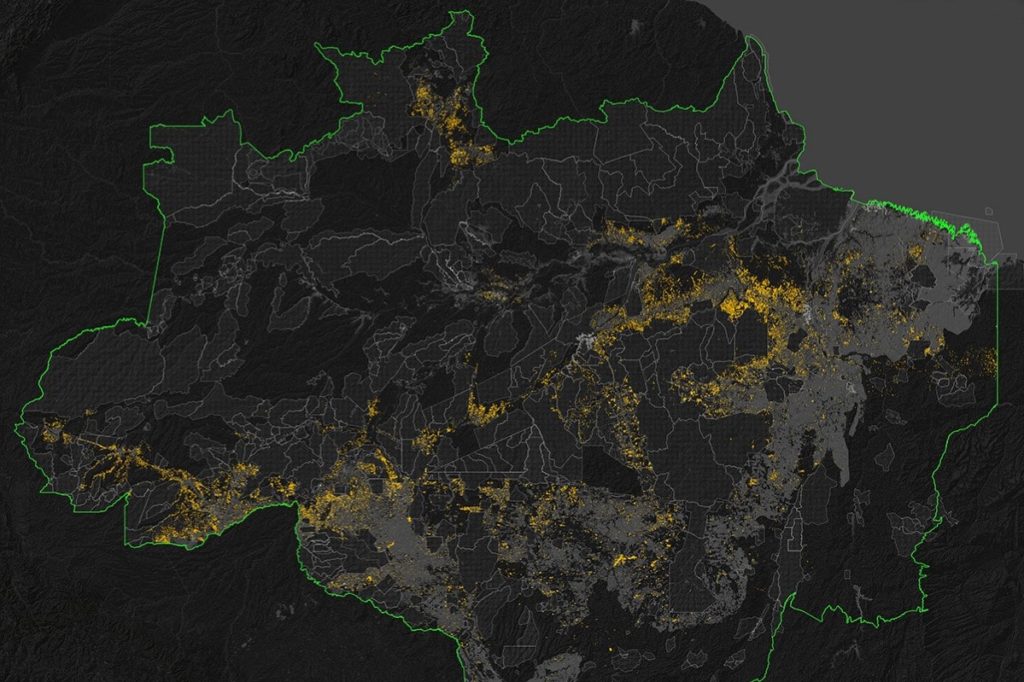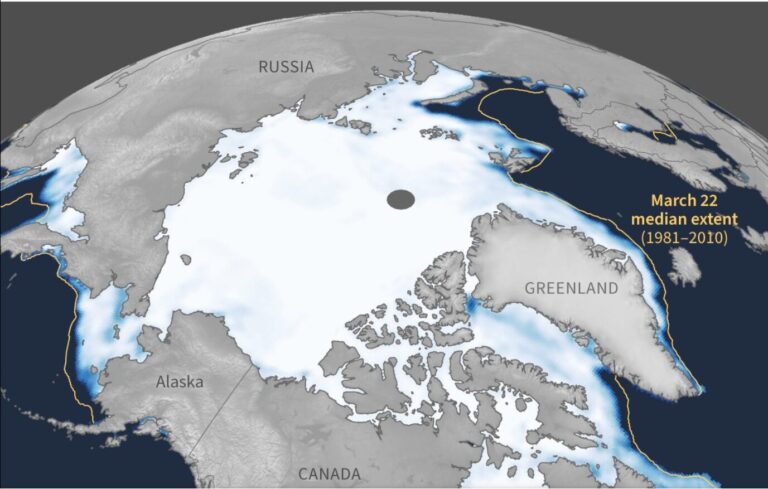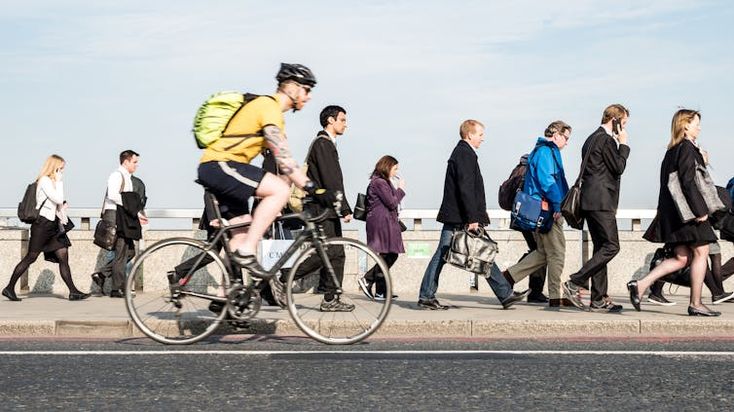
By Espen Røst, Bistandsaktuelt translated by Jan Terje Espeland, Bergensia
Official measurements of the devastation in Brazil’s rainforest hide huge numbers, according to Antonio Donato Nobre, Senior Earth Scientist in INPE’s Center for Earth System Science. In this interview, Nobre explains how the “invisible flying rivers” can prevent the Amazon from becoming a desert.
Sea areas and land areas are wrestling over influence regarding wind directions. The fight will be won by the area with the greatest occurrence of evaporation and condensation in the atmosphere. Antonio Donato Nobre
– 20 percent of the trees are cut down, gone – that’s right. But the official figures do not include degraded forest. In reality, half of the Brazilian rainforest is destroyed, says Antonio Donato Nobre, Senior Earth Scientist in INPE’s Center for Earth System Science.
November 18., provisional official deforestation figures for Brazil for “the forest year 2019” were published by INPE. The figures are yet to be verified, but according to the country’s satellite monitoring program Prodes, close to 10,000 square kilometers of rainforest were lost between August last year and July this year. It is the highest deforestation reported since 2008.

– The numbers are shocking enough, but they only show part of the drama that is currently unfolding in the Amazon. Up to one and a half times as much forest as the official figures show, is now so destroyed that the forest can no longer provide climate solutions. Then these numbers are misleading.
Only dead trees are counted for
Antonio Donato Nobre is in Norway to participate in the Rainforest Foundation’s 30-year mark and to share his perspectives during the Norad Policy Forum.
To the Bistandsaktuelt, the senior researcher says that INPE’s satellite images do not show the damage done under the top treetops. He explains that many of those who contribute to deforestation leave the big trees – and chop the smaller ones.
– Some sow grass and allow cows to graze in these areas. So when INPE detects deforestation using satellite imagery, these areas are not recorded because there are still trees there, says the senior researcher.

He explains that this is an estimate because Brazil does not yet have technological equipment that can regularly make satellite measurements of degraded forests.
– But surveys, both on the ground and from the air, in these areas, showed that up to 60 percent of the crowns were destroyed. When forests are destroyed, the ability to absorb and store carbon is reduced, and more remains in the atmosphere, Nobre explains.
– When the forest “thins out” there will also be room for local climatic differences, with more wind or more sun. It changes the ecosystem and causes even more trees to die. When this happens, the development has come so far that it cannot be reversed, Nobre says.
He believes this is important information to include in the more general climate debate because “Judge Climate knows how to count trees”.
– If a tree can no longer assist with its services, it is immaterial what the official figures say. Imagine a picture with ten people. Two are dead on the ground, three are ill, while the rest is fine. Prodes counts the dead but ignores the three who are sick. If Prodes does not see that these three are so sick that medicines cannot help them. The system is thus an excellent tool for counting the dead, but not for giving us a full overview.
Invisible floating rivers
Antonio Donato Nobre has been following developments in the Brazilian rainforest for more than thirty years. When he first became interested in one of the world’s most important ecosystems, the weather pattern in the Amazon was different than it is today.
At that time it rained a little every single day, year-round.
– Although it only came a few millimeters in some periods, it was enough to keep the forest so wet that it did not catch fire. In some places, it can now take up to two months without a drop.
He says that at that time it was a wet and a wetter season.
– We still have two seasons, but now one of them has become a dry one.
In the report The Future Climate of Amazonia, the INPE researcher describes some of the mysteries (see fact box) he believes are important for the Amazon to maintain its role as climate regulator:
He explains why the Amazon is referred to as the “green sea”, that the trees “sweat” so much that they produce their own rain, and that the rain forest absorbs moist air from the sea. But what Nobre is most famous for is the popularization of, and the story of “the invisible flying rivers” – very high humidity.
According to Nobre, the “rivers” regain power when wet air over the Amazon meets the 6,000-meter-high Andes. From there, they take a south-easterly direction down to Argentina’s capital Buenos Aires before the “river” turns upwards, through countries such as Uruguay and Paraguay, and back towards the state of Mato Grosso, some 2,000 kilometers further north. These are South America’s epicenter of agricultural production – and it’s the Amazon’s merit that it’s so fruitful here.
– When I went to school, I learned that the ocean evaporates and turns into clouds that carry freshwater inland. This will allow the land to be nourished by rain, and the land system will then bring the water back to the sea through rivers. But if this explanation were correct, there would be no desert areas in the world, Nobre says.
– Our studies show that there are specific places that draw moisture from the ocean and that it is the trees that are drivers of moisture inland. Unlike what happens in a desert area, the forest absorbs moisture from the ocean. It turns into an invisible flying river.
The Amazon can become desert
The INPE researcher believes a lot points in the direction that his pump theory is correct.
– Sea areas and land areas are wrestling over influence regarding wind directions. This will be won by the area with the greatest occurrence of evaporation and condensation in the atmosphere. Right now, Amazon is the strongest, attracting a stream of moist air from the Atlantic. If the forest disappears, evaporation and condensation will be greater over the sea and the wind directions may be affected.
In the worst case, the pump is reversed, Nobre says, explaining that if the wind direction turns, the ocean will attract air from the continent: Precipitation will disappear.
– Zero rainfall means desert.
– Desert! Does that mean you mean we’re approaching the Amazon collapse?
– Previous research has suggested that degradation of rainforest can lead to savanna-like areas. Our theory of the biotic pump points out that a change in wind directions – where the wind turns and is pulled from the Amazon to the sea – will change the area more drastically than that.
– My answer is therefore that parts of the Amazon have passed such a tipping
point. Deforestation and degradation in western parts of the rainforest are
still not alarmingly high, but there is now research showing that there is less
humid air over the eastern parts of the Amazon. When the humid air disappears,
the forest degrades by itself, Nobre says.
He says research has shown that Sahara was covered by forests 11,000 years ago.
– So this has happened before, and that is what makes this extremely scary. If we lose enough trees, the entire ecological and hydrological cycle will change. Amazon will eventually become a desert.
Fake science?
Antonio Donato Nobre worked for 20 years at the National Institute of Amazonas Research (INPA). For the past fifteen years, he has been working in INPE, seeing the record high deforestation in 2004 decline relatively steadily until 2012 – when the trend reversed. He points out that the preliminary Prodes figures show that deforestation in “the forest year 2019” was as much as 30 percent higher than the previous year.
– What is happening in the Amazon now is like a nightmare. We have all the knowledge to know that deforestation must be stopped. Instead, the destruction has increased.
– Many would say that Brazil’s President Jair Bolsonaro has contributed to the increased deforestation this year?
– Bolsonaro himself answered that question recently when he stated that he has changed Brazilian policies to stimulate growth in the Amazon. I think that the answer speaks for itself, but it’s no secret that the incumbent government has a different view of the Amazon than the previous one. It’s unfortunate because most of the rhetoric – that the Amazon is capable of development – is based on fake science.
The heart of the planet
Nobre believes the preservation of the globe’s rainforests is the most important thing humanity can do to curb global warming, citing the Amazon as an essential water-pumping body.
– I like to refer to the rainforest as a heart because it works with water as the heart pumps blood around the human body. The Amazon is the largest of the globe’s rainforests and is therefore essential for contributing to high humidity in the atmosphere, which in turn affects the temperature of the globe. If we lose the forests in the tropical belt as climate regulators, we will have a global temperature increase.
– The heart of the planet? There was recently a debate in Norway about whether the Amazon is the globe’s lungs or not …
– Yes, lungs, or kidneys or heart. The debate about whether the Amazon absorbs or emits the most CO2 is completely irrelevant. It is a non-discussion that takes focus from what is important. Most important is the forest’s ability to control water vapor and atmospheric currents, for the Amazon cannot be a carbon stock without water: Without water supply, there will be no forest.
He says the international climate talks have become too carbon-focused.
– If we enforce a ban on the use of fossil fuels globally tomorrow but continue to cut down trees, we will still not be able to stop climate change. Losing the Amazon will be the downfall of the Paris Agreement. And there is not one place on earth that will not be affected if it happens.
Unraveling the mysteries of the Amazon
The first mystery involves the humidity that the rainforest maintains in moving air, and which brings rain to mainland areas that are located far from the oceans. This occurs due to the innate ability of trees to transfer large volumes of water from the soil to the atmosphere through transpiration.
The second mystery concerns the formation of abundant rainfall in clean air. Amazonian trees emit volatile substances that act as precursors of condensation nuclei for water vapor. The efficiency of these particles in cloud nucleation results in benign and bountiful rainfall.
The third mystery is related to the rainforest’s capacity to survive climatic cataclysms and its formidable powers to sustain a beneficial hydrological cycle, even under unfavorable external conditions. According to the biotic pump theory3 , profuse tree transpiration, combined with very strong condensation in the formation of clouds and rainfall – a condensation far greater than that which occurs over adjacent oceans – leads to a reduction in atmospheric pressure over the forest which, in turn, draws moist air over the oceans inland, maintaining rainfall levels under most circumstances.
The fourth mystery explains why the southern portion of South America on the eastern side of the Andes is not a desert, as is the case with other areas at the same latitudes both west of the Andes and on other continents. The Amazon rainforest not only keeps the air moist for its own purposes but also exports water vapor via aerial rivers, which carry the water that will produce the abundant rainfall that irrigates distant regions during the summer months.
The fifth mystery provides the reason why the Amazon and the oceans nearby do not allow certain atmospheric phenomena, such as hurricanes and extreme weather events, to propagate. Spatially uniform condensation over the wrinkled forest canopy precludes the concentration of wind power in damaging vortices like hurricanes or tornadoes on land, while the depletion of atmospheric moisture by lateral transport from over the ocean deprives the storms of their food (water vapor) in the oceanic regions adjacent to big forests.
All these effects together combine to make the majestic Amazon rainforest the very best and most valued partner for all human activities that require measured amounts of rain, a mild climate, and protection against extreme events.
The Future Climate of Amazonia
At the request of the Amazonian Regional Articulation (ARA), Brazilian research scientist Antônio Donato Nobre of the Brazilian National Space Research Institute’s Terrestrial System Science Centre conducted The Future Climate of Amazonia report. The report demonstrates the uniqueness and importance of the Amazon Rainforest and why it is crucial for us to combat its deforestation. It was co-sponsored by different institutions, including WWF through its Living Amazon Initiative.
https://d2ouvy59p0dg6k.cloudfront.net/downloads/the_future_climate_of_amazonia_report.pdf




22 Comments
Pingback: Exterior Painting Services in Pflugerville
Pingback: lazywin888
Pingback: comprar Concerta
Pingback: สล็อตวอเลท ทางเข้าเกมเดิมพัน จ่ายเงินจริง
Pingback: พลาสติกวิศวกรรม
Pingback: Joker Slot ฝากถอนวอเลท
Pingback: click resources
Pingback: ทดลองเล่นสล็อต pg
Pingback: Scienc1e
Pingback: ของพรีเมี่ยม
Pingback: Aviation Tire
Pingback: Douceur Beauty
Pingback: BAU_2025
Pingback: https://studiomariottimontagnani.it/2025/03/02/pocket-option-broker-panduan-lengkap-untuk/
Pingback: สมัครสล็อตวอเลท ฝากถอนไม่มีขั้นต่ำ เริ่มต้นบาทเดียว
Pingback: Mostbet
Pingback: https://www.baghome.co
Pingback: ขายของออนไลน์
Pingback: สั่งซื้อ หวยออนไลน์
Pingback: ricky casino
Pingback: 1win
Pingback: wing1688